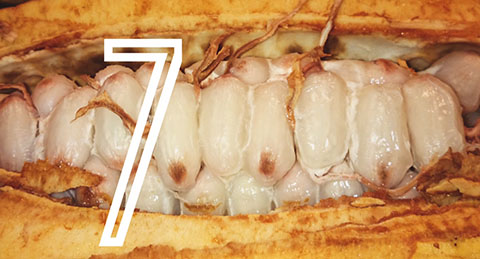Permaculture and Chocolate
 Cacao as a Cash Commodity
Cacao as a Cash Commodity
Some hershey kisses and rolos. A reminder of Caroline’s halloween stash. As our group learned at the NW chocolate festival, Cacao is a growing demand in the world today. Most artisanal chocolate makers who wish to make excellent chocolate source their cacao beans from South America, where cacao is native. But the reality is most of the chocolate we see on the store shelves today probably came from Africa. According to the International Center for Research in Agroforestry (ICRA), the Ivory Coast and surrounding West African countries supplied 65% of the world’s cacao supply in 1996. However, most chocolate consumers may not know what goes into making a bar of chocolate, like where it came from, who supplied its beans, or whether it’s necessarily the “best” chocolate. But the “best” is not so easily defined. Today, many farmers in West Africa rely on cacao as a cash commodity and have beenContinue Reading
- Permaculture Design: Thinking future Cacao
Integrative Question: Using a permaculture design lens, outline an ideal cacao production and distribution system that integrates all disciplinary learning to satisfy the ethics of earth care, people care and fair share. Cacao trees are delicate and sensitive to changes in weather, therefore need to have a decent canopy to shade it from direct sunlight. This canopy could be of use itself too. Native, profitable tall plants that grow in the same climate as cacao could also include: Fruit trees, (up to 50 different fruits can grow harmoniously alongside cacao!) rubber trees, different kinds of timber and fibers, all while providing a better habitat for wildlife. This shaded approach at cultivating cacao also provides the perfect environment for the very thing that pollinates these plants, midges! And is also home to many cacao pest-eating creatures as well. This natural approach at cacao farming ensures natural systems stay in play, ultimately keeping the soil fertileContinue Reading
- Climate Change: Rising Temperatures and Falling Water Supplies
Ghana and Ivory Coast in Africa produce more than half of world’s supply of chocolate, but, as temperatures rise and extreme weather becomes the norm, cocoa production in the two countries will begin decreasing by 2030 and getting much worse by 2050 according to 2011 study from the International Center for Tropical Agriculture (CIAT). By 2050, in the African nations of Ghana and Ivory Coast, It is predicted that temperatures will rise by at least 2 Celsius degree. That will cause cocoa trees to lose more water and to produce less cocoa fruit in return. The impact of climate change: Figure 1: Climate trend summary for 2030 and 2050. Blue bars show current and 2050 precipitation trends and red lines show the current, 2030 and 2050 temperature Figure 2: Mean annual precipitation changes by 2030 Figure 3: Mean annual precipitation changes by 2050 Figure 4: Current suitability for cocoa production withinContinue Reading
Field Study
- 8 Oct 2015
Our favorite chocolates: Durci Fresco Dandelion Seleuss CrioBru (Cacao beverage) Fresh Cacao fruit (Ze’s favorite)
- 8 Oct 2015
This interview was held at the Northwest Chocolate Festival at the Bell Harbor International Conference Center in Seattle, Washington. Featured in this interview is oneContinue Reading
- 8 Oct 2015
Day/Time Title of Tasting Author/Rep Saturday 4pm Fermentation Ingemann Sunday 11am Chocolate Making from Bean to Bar at Home Dandelion Chocolates Sunday 4pm Direct Trade:Continue Reading
- 8 Oct 2015
Day/Time Workshop Speaker Saturday 11 AM Building a Healthy Ecosystem for Cacao and the Future of Chocolate Sunita de Tourreil Saturday 12 AM Taste theContinue Reading
Terroir +
- 8 Oct 2015
Terroir is: all the factors that give an ingredient from a particular place a particular flavor.
- 22 Sep 2015
On the flavor of single origin chocolate Maricel E. Presilla writes “What distinguishes one natural blend from the other is a matter of the local soilContinue Reading

